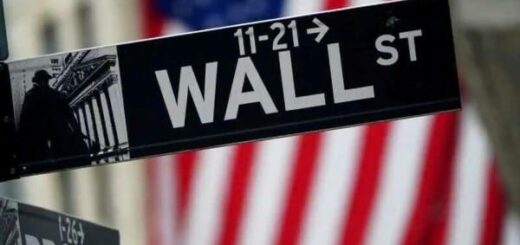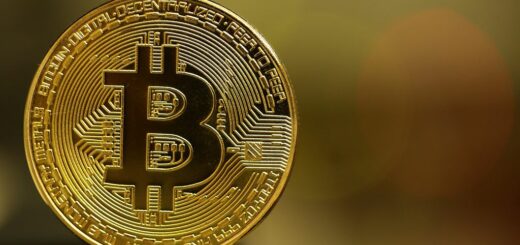China shares move as true information showed economic development bested 8% last year

- Asia-Pacific business sectors exchanged blended Monday as monetary information out of China showed the world’s second biggest economy became surprisingly quick among October and December.
- Numbers from China’s National Bureau of Statistics showed the Chinese economy developed by 8.1% in 2021, marginally beneath the market’s assumption for around 8.4% development for the year.
- In the final quarter, China’s GDP rose 4% from a year prior, beating a Reuters survey that anticipated a 3.6% increment.
Shares were blended in Asia on Monday after China revealed that its economy extended at a 8.1% yearly speed in 2021, however development eased back to a large portion of that level in the last quarter.
Tokyo, Shanghai and Sydney rose, while Hong Kong and Seoul declined.
Chinese offers climbed Monday in a blended exchanging meeting across the Asia-Pacific as true information showed the world’s second biggest economy became surprisingly quick among October and December.
The Shanghai composite added 0.55% in evening exchange while the Shenzhen part acquired 1.37%.
The shortcoming in China’s economy close to the furthest limit of 2021 is inciting ideas Beijing ought to mediate to set up development with loan fee cuts or by infusing cash into the economy through open works spending.
Numbers from China’s National Bureau of Statistics showed the Chinese economy developed by 8.1% in 2021, marginally underneath the market’s assumption for around 8.4% development for the year. In the final quarter, China’s GDP rose 4% from a year prior, beating a Reuters survey that anticipated a 3.6% expansion.
Modern creation likewise rose and beat assumptions, yet retail deals had a more muffled development.
In a matter of seconds before the development information were delivered, the Chinese national bank declared a rate slice on medium-loaning to business banks to the most reduced level starting around 2020.
“Monetary energy stays powerless in the midst of rehashed infection episodes and a striving property area,” Julian Evans-Pritchard of Capital Economics said in an analysis. He anticipates that China’s policymakers should keep limits on loaning moderately close and control credit development.
“The end result is that approach facilitating is probably going to mellow the monetary slump instead of driving a bounce back,” he said.
Easing back movement in China, the district’s greatest economy, can chill development all through the area. Lockdowns and different precautionary measures forced to battle flare-ups of Covid can likewise deteriorate deficiencies of key parts and parts, adding to challenges with delivery and supply chains.
China requires more approach support
Market analysts were expecting Monday’s information dump to underline a log jam in development, to some extent because of elements like China’s severe measures to contain the omicron Covid variation just as issues in its property area and slow utilization.
“Retail deals was a major miss,” Johanna Chua, head of Asia financial matters and methodology at Citi Global Markets Asia, told on Monday. “Here I think it truly requires somewhat more arrangement support.”
The Shanghai Composite file acquired 0.6% to 3,542.74, while Hong Kong’s Hang Seng dropped 0.7% to 24,2207.75.
South Korea’s Kospi sank 1.1% to 2,890.10 after North Korea shot two speculated long range rockets into the ocean early Monday in its fourth weapons send off this month, South Korea’s military said, with the obvious objective of exhibiting its military may in the midst of stopped tact with the United States and pandemic boundary terminations.
In Tokyo, the Nikkei 225 progressed 0.7% to 28,333.52 as the public authority revealed hardware orders rose in November as private speculation and assembling action improved during a respite in Covid flare-ups. Shipbuilders orders flooded 170%.
China’s national bank likewise cut the getting expenses of its medium-term credits interestingly since April 2020, Reuters detailed. The People’s Bank of China said it was bringing down the loan fee on 700 billion yuan ($110.19 billion) worth of one-year medium-term loaning office advances to a few monetary organizations by 10 premise focuses to 2.85%, the news office announced.
Citi’s Chua said while the circumstance of the decrease was in accordance with the venture bank’s assumptions, it was as yet a bigger than anticipated cut. “Which truly proposes that, I think, policymakers currently are considerably more worried about development, and we should see coordinated activity going ahead,” she added.
Chua additionally said she doesn’t anticipate seeing China leave its zero-Covid strategy at any point in the near future.
Last week, U.S. speculation bank Goldman Sachs cut its 2022 conjecture for China monetary development from 4.8% to 4.3%.
On Friday, the S&P 500 squeezed out a 0.1% increase, shutting down at 4,662.85. It flooded in the last minutes of exchanging in the wake of having been down around 1% before in the day. The tech-weighty Nasdaq posted a 0.6% increase, shutting down at 14,893.75. The Dow Jones Industrial Average fell 0.6% to 35,911.81.
Rest of APAC blended
The remainder of Asia-Pacific business sectors exchanged blended.
The Nikkei 225 in Japan rose 0.74% to 28,333.52 while the Topix record added 0.46% to 1,986.71.
Australian offers additionally squeezed out gains as the ASX 200 added 0.32% to 7,417.30. The intensely weighted financials subindex acquired 0.55% and the energy area was up 1.39%.
South Korean offers, be that as it may, floundered as the Kospi slipped 1.19% and the Kosdaq was down 1.36%. Hong Kong shares additionally battled as the Hang Seng file fell 0.91%.
The meeting in Asia followed a blended completion in the U.S. last Friday, where Wall Street indented a subsequent straight regrettable week to begin the year.
The blended completion covered seven days of rough exchanging on Wall Street that extended the market’s January droop. The benchmark S&P 500, which took off 26.9% in 2021, is presently around 2.8% underneath the untouched high it set on Jan. 3.
The Commerce Department announced Friday that retail deals sank 1.9% in December after Americans cut their spending even with item deficiencies, rising costs and the beginning of the omicron variation.
That was the most recent in a progression of financial reports this week that has raised worry about expansion and its effect on organizations and purchaser spending.
Rising costs have been provoking organizations to give more expenses for shoppers. Customers have been pulling back on spending at retail chains, cafés and online because of greater costs and supply deficiencies.
Monetary standards and oil
In the cash market, the U.S. dollar exchanged close to level at 95.175 against a container of its companions, after last week moving from levels close 94.87.
The dollar could “stay weighty this week and head down towards 94.11,” said experts from the Commonwealth Bank of Australia in a Monday note.
They noticed that there are no arrangement pertinent financial information sets this week or any planned addresses free from Fed authorities that could impact the market valuing for the U.S. national bank’s rate climbs.
Oil costs progressed on Monday during Asian exchanging hours. U.S. rough added 0.54% to $84.27 a barrel while worldwide benchmark Brent rose 0.3% to $86.32.
Disclaimer: The views, suggestions, and opinions expressed here are the sole responsibility of the experts. No STOCKS MONO journalist was involved in the writing and production of this article.



